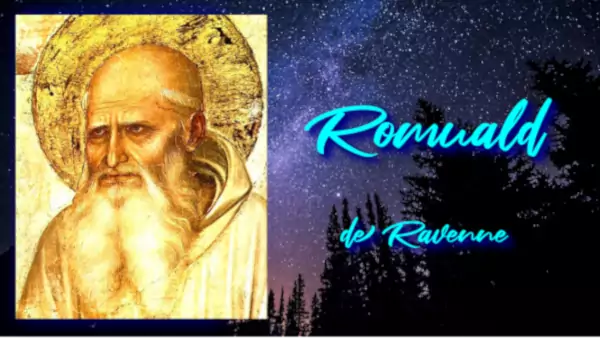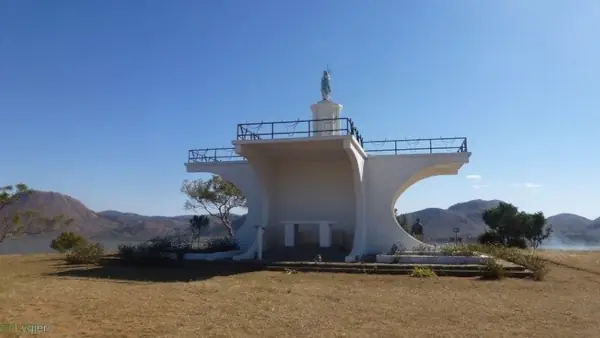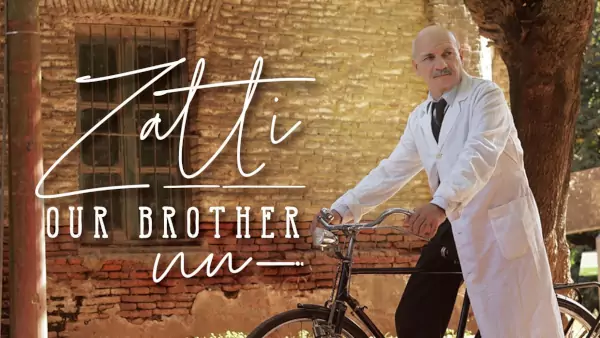19 June - Romuald was born around 950 in the family of the Onesti, Dukes of Ravenna, and grew up in the oriental comfort, the taste for pleasures, the easy life of his aristocratic milieu. Deeply troubled by the murder of a relative, Duke Serge of Ravenna, committed by his father during a duel, he withdrew from the world to do penance in his name.
He took the Benedictine habit in the monastery of Appolinaire-in-Classe where he stayed for three years. There, some monks jealous of his exemplary conduct plotted his death. Warned by one of the accomplices, he withdrew into solitude, not far from Venice, to a hermit named Marin and spent three years there. In 978, Romuald and Marin accompanied the Venice doge Pietro Orseolo to France. He lived in solitude near the Abbey of St. Michael of Cuxa. When Romuald learned that his father, who had become a religious, was thinking of returning to the world, he wanted to leave Cuxa and return to Italy to dissuade him. On learning that Romuald was about to leave, the inhabitants, who already considered him a saint, decided to have him murdered, in order to keep his body as a beneficial "relic". Fearing that Romuald's fateful purpose was being planned, he pretended to be crazy, and the protagonists of his assassination, seeing him as a man without reason, let him go.
There was no shortage of hermits in Italy in the 10th and 11th centuries: the choice of solitude and distance was a double reaction: against a Church that was too compromised with the political world and against traditional monastic life that was considered "loose". They wished to return to the spiritual freedom of primitive monasticism. Romuald is the catalyst for these aspirations: a return to the original purity of Eastern monasticism with the inner creativity of the following of Christ, with reintegration into ecclesial communion by means of religious obedience. The moral and religious authority given to him by a personal life of great austerity and penance helped him to reform many monasteries (Italy, France, Hungary, Poland, etc.), reintroducing the Eastern cenobitic model which combined personal solitude with common liturgical celebrations. This ideal was concretised in particular in its foundation (1012) in Camaldoli, Tuscany (Italy) (hence the name Camaldules), of a new type of monastery where common life combining work and divine office was combined with hermitry. The monks abandoned the black habit for the white one and wore a full beard. Many other Camaldolese monasteries were established throughout Europe during Romuald's lifetime and later throughout the world.
The greatest, the most powerful, visited him, asked his advice, confided in him and converted, stripping themselves of all their wealth to walk in the footsteps of their guide. Romuald systematically refused titles and honours, sometimes going so far as to simulate madness to get out of it and maintain an ascetic life. He enjoyed, at a very high level, the gift of tears. He could not celebrate Mass without shedding tears, which shows how free and loving a servant of God he was. It is precisely this spirit of freedom which is recognized in Romuald's teaching, in his advice, so simple and discreet, which generates peace and joy, and which recalls the precepts of the fathers of the desert.
His immense kindness to the poor, to those who despised life, to the animals of all kinds who came freely to him, is also evident. In a good number of Camaldolese manuscripts, we can still read that the hermit Romuald considered that animals were just as deserving of care as men, and so he dressed the wounds of his fellow men as well as those of the animals he collected in his cell. Finally, we remember the words of the saint who cried out in the joy of his heart: "O dear Jesus, O my beloved, my sweet honey, my ineffable desire, sweetness of the saints, sweetness of the angels!"
As he had predicted twenty years earlier to his brothers, he came to die in the monastery of Val di Castro on the 19th of June 1027. His tomb (where his body had remained intact) attracted pilgrims and miracles took place there. Romuald was canonized in 1595 by Pope Clement VIII. His sarcophagus can be seen in the Church of St. Romuald (chiesa di San Romualdo) in Fabriano, where his relics were transferred on 7 February 1481.








